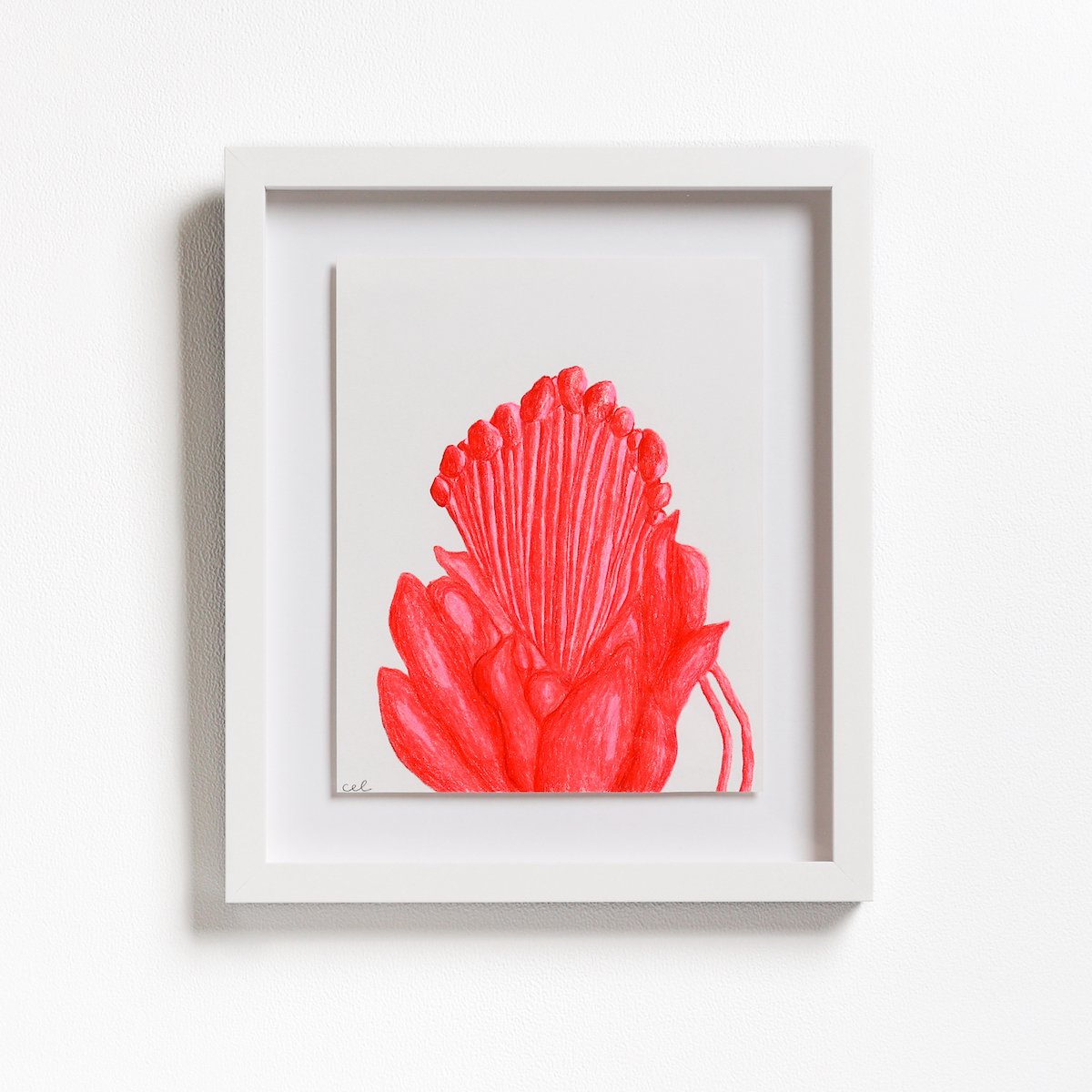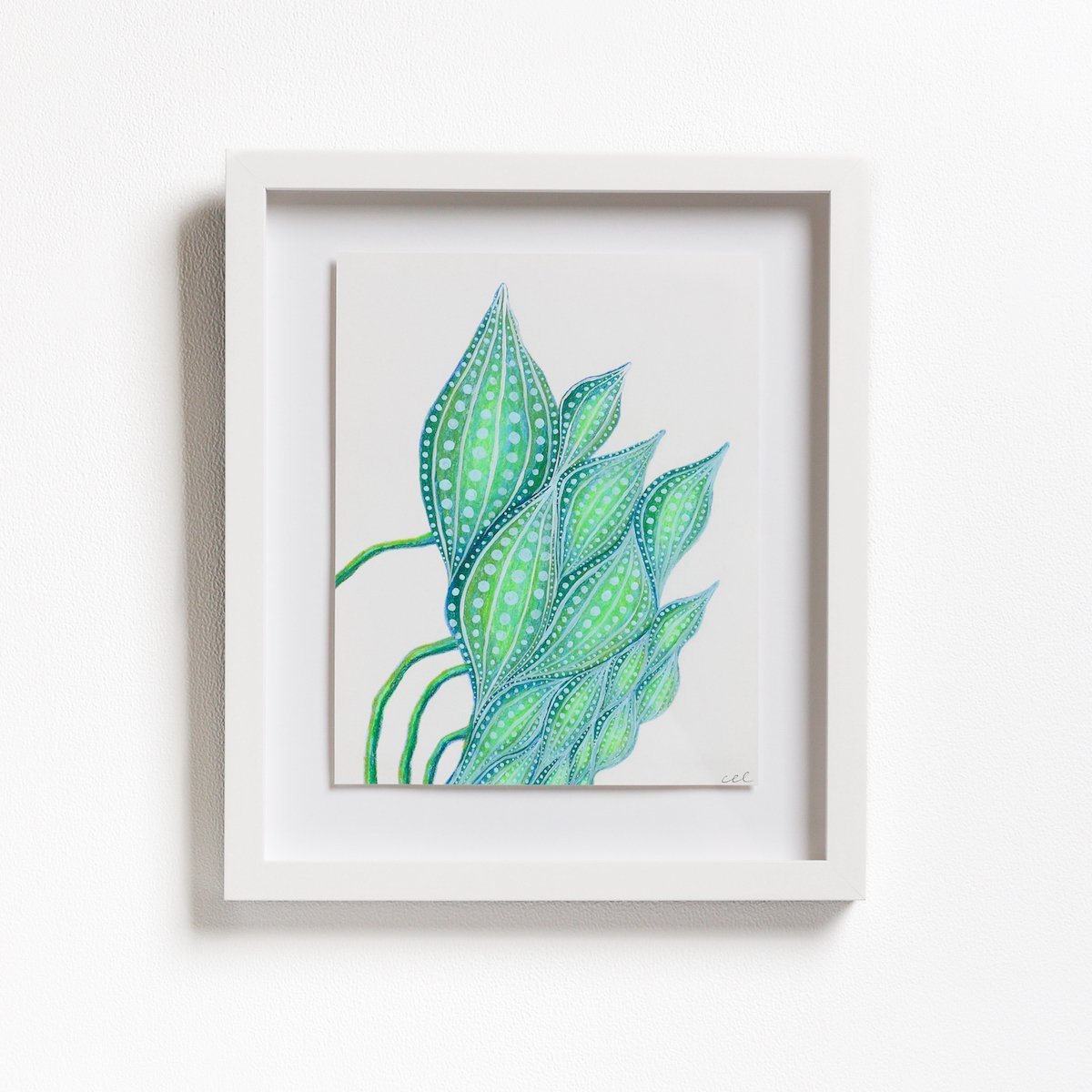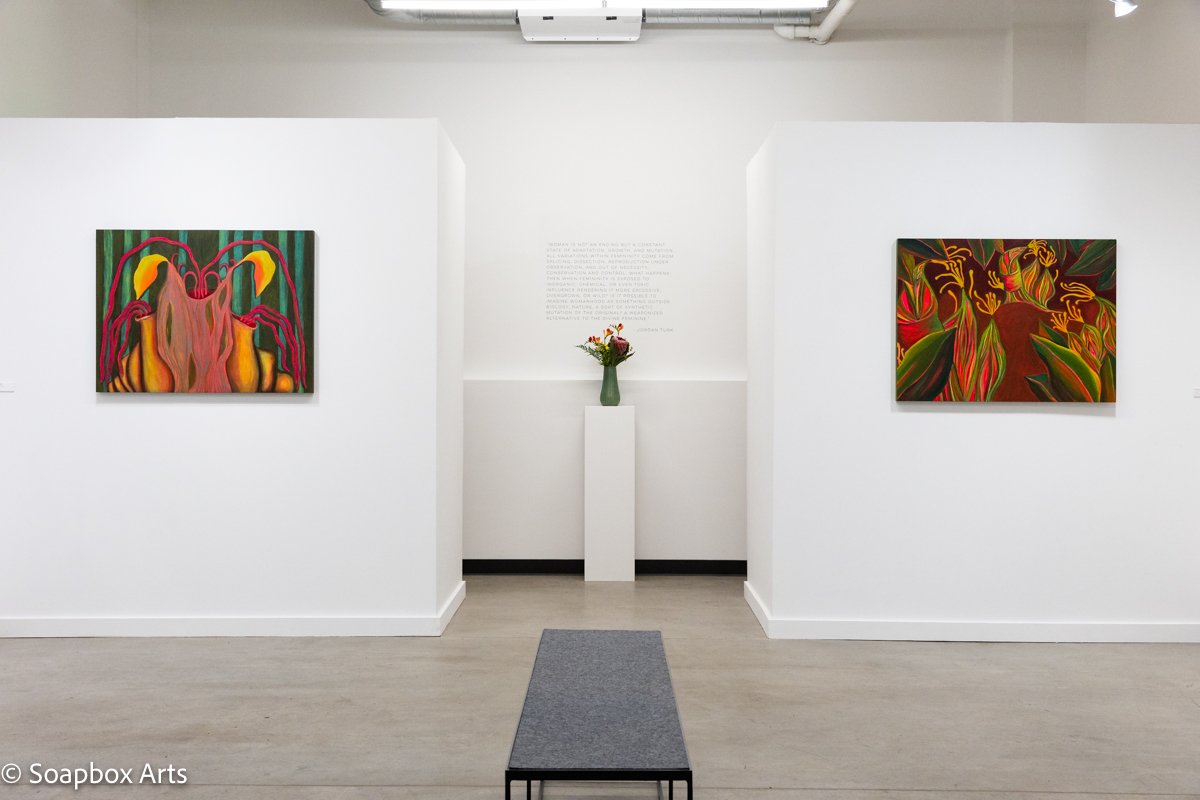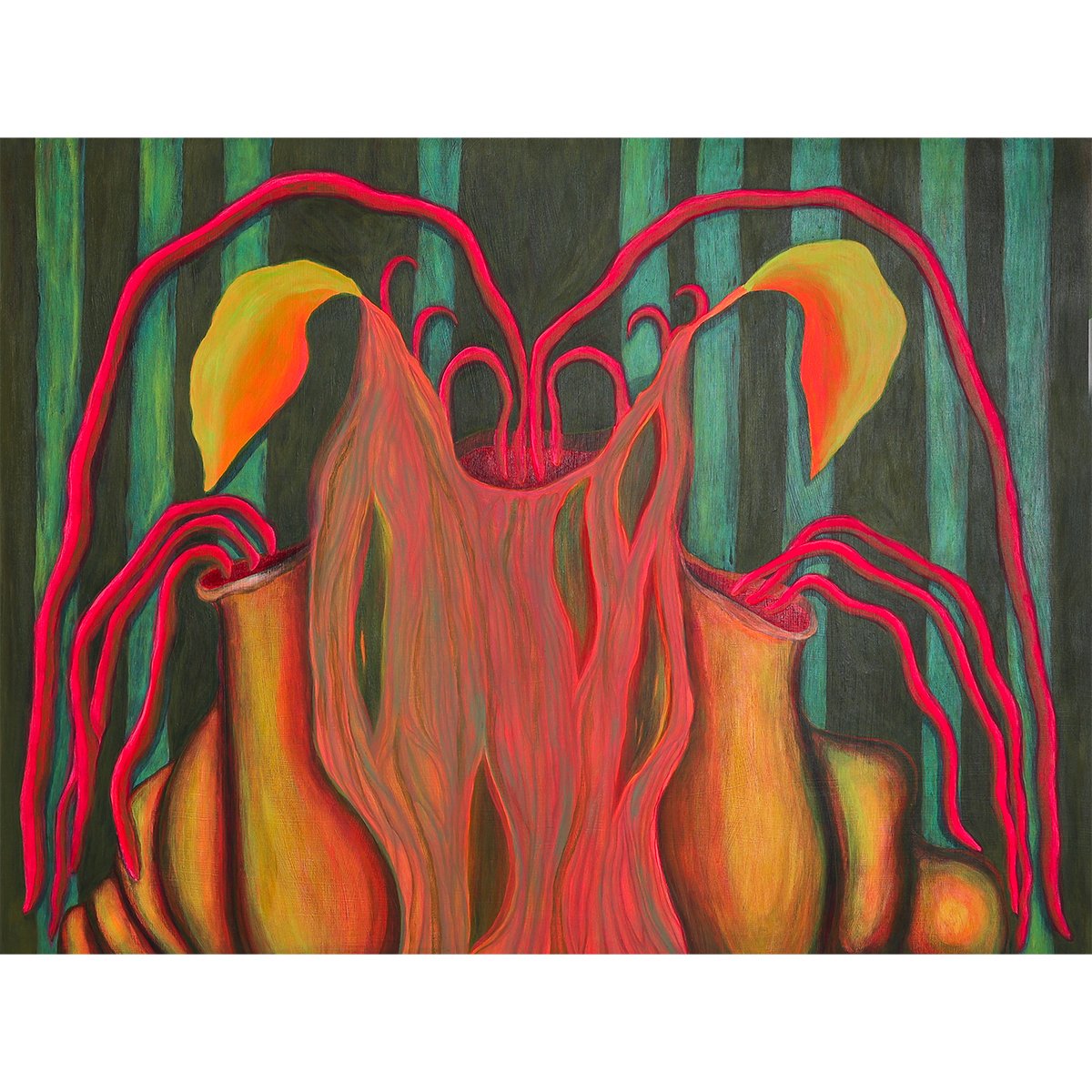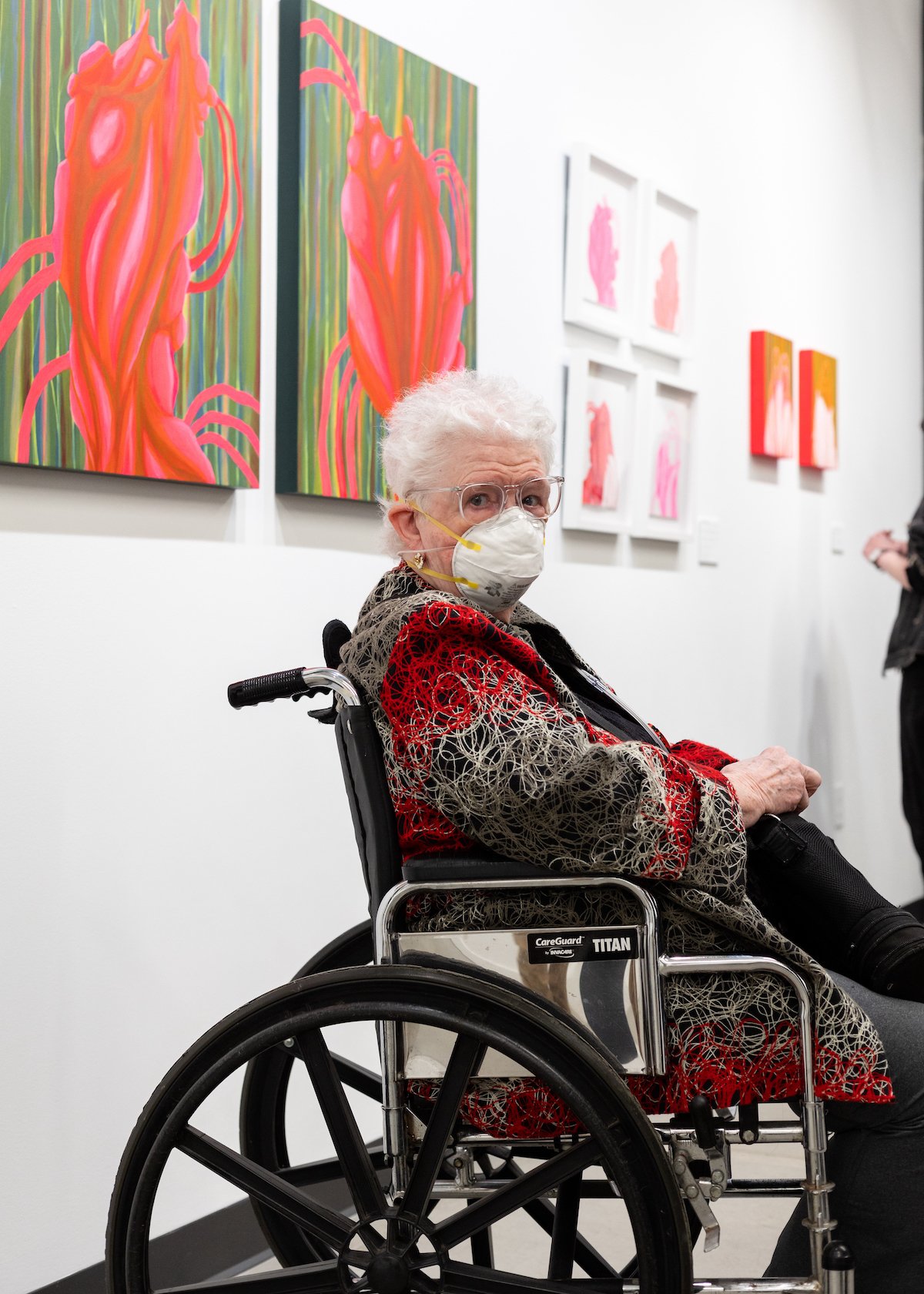When Nathaniel Hawthorne wrote his gothic short story Rappaccini’s Daughter in 1844 it would have been impossible for him to imagine his fiction becoming a prophecy of things to come. As the gothic gave way to horror and eventually science fiction it often warned of things to come in the name of scientific progress and technological advancement. Stories of gothic creation are often subject to the trope of a scientist gone rogue creating a metaphorical child, a creature they create but can no longer control.
The femme marks a rupture, a tearing away from any notion of woman as a fixed, unquestioned category. It’s a site of not only trauma but resistance. Gender becomes no longer biological given but a source of artifice, a sexual cyborg escaped from the lab and no longer reliant on its captor for survival. The femme becomes a sort of cultural fugitive, moving unnoticed through the world.
In her newest body of work, La Dolce is both the creator and careful observer allowing her viewer to witness the perversion of plants into seductive, even potentially toxic femme bodies in the acts of resistance in their mutated glory. They are not victim or villain, they are the embodied potential of feminist futures. They are grown from the seeds collected from the mother’s pod, cared for and nurtured to reclaim their bodies. They are a proclamation and prophecy much like their earlier siblings.
Their beauty is not a gift but an alluring side effect drawing the viewer into something they may not understand but can’t look away from. They ask if we are ready to move past the organic and recognize our own destruction at the hands of ignorance. The viewer watches on unaware that if they get too close to these Femme Fatals, it is their own undoing. The hunter becomes the hunted, the predator falls prey, and these beautifully monstrous beings have outgrown their pots.”
Overgrowth, 2020
Exhibition Essay “High Femme and Misdemeanors” by Jordan Olivia Turk
“An origin story. A place to start from, explaining how or why something exists. A retracing, cutting back the thing to its root. It’s a etymology, the language. It’s inherited myth, the primary text. In order to understand the present of a thing we need look closely at it, study it’s nuances, the origin story is an attempt to explain the nuances of how the subject became, in the hope of knowing it’s becoming. Woman is not a ending but a constant state of adaptation, growth and mutation. All variations within femininity come from splicing, dissection, reproduction under observation and out of necessity conservation and control. What happens then when femininity is exposed to inorganic, chemical or even toxins rendering it more, excessive, overgrown or wild? Is it possible to imagine womanhood as something outside biology, nature, a sort of synthetic mutation of the original. A weaponized alternative to the divine feminine.
Queer gothic and science fiction gave rise to stories warning of the dangers of science as a field signifying a human transcendence over the constraints of religious rhetoric. It is a fear of self determination marking the death of patriarchal influence. Feminist even at its early permutation.






